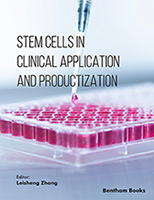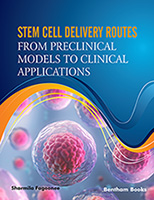Preface
Seven volumes of our e-book series entitled “Frontiers in Stem Cell and Regenerative Medicine Research” have been published in just three years. This is indicative of the rapidity with which this multidisciplinary research area is growing.
The first chapter of this volume deals with in vivo mesenchymal stem cell research as a means to enhance cartilage repair. Cucchiarini et al. provide an overview of the most recent innovative strategies based on the implantation of MSCs as a means to enhance cartilage repair. They have included scaffold-free and scaffold-guided procedures as well as gene-based strategies to stimulate the cell chondrogenic activities to restore the natural structure and integrity of sites that have damaged cartilage.
In chapter 2, Levison et al. discuss the inflammatory signals that affect the proliferation and differentiation of the stem cells. They also review the progress being made in understanding the mechanisms by which immature cells of the brain’s subventricular and subgranular zones respond to injuries and inflammation-induced cytokines.
Chapters 3 and 4 by Pareja et al. and Jeschke et al., respectively, deal with cell-based therapeutic strategies for treatment of common liver diseases and liver regeneration. Human pluripotent stem cells with hepatic differentiation potential represent a valuable cell source for generating large numbers of functional hepatocyte-like cells for liver cell therapy.
Hatano and McCloskey in chapter 5 discuss various techniques recently used for tissue engineering of cardiac tissues for improving cardiac functions.
Together with the regenerative medicine (RM) and personalized therapies, nanomedicine represents one of the fields of advanced therapies. Labusca et al. in chapter 6 have reviewed the current role and future perspectives of magnetic nanoparticles in regenerative medicine. It is expected that developments in this field may drastically revolutionize heath care and improve the quality of life globally.
It is hoped that readers will enjoy the far-reaching and explicit reviews on exciting advances in stem cell and regenerative medicine research. We are grateful to the eminent scientists who have contributed excellent articles for this volume. We also owe our thanks to all the editorial staff of Bentham Science Publishers, particularly Dr. Faryal Sami, Mr. Shehzad Naqvi and Mr. Mahmood Alam for their technical support.
Prof. Atta-ur-Rahman, FRS
Honorary Life Fellow
Kings College
University of Cambridge
Cambridge
UK
&
Dr. Shazia Anjum
Department of Chemistry
Cholistan Institute of Desert Studies
The Islamia University of Bahawalpur
Pakistan





